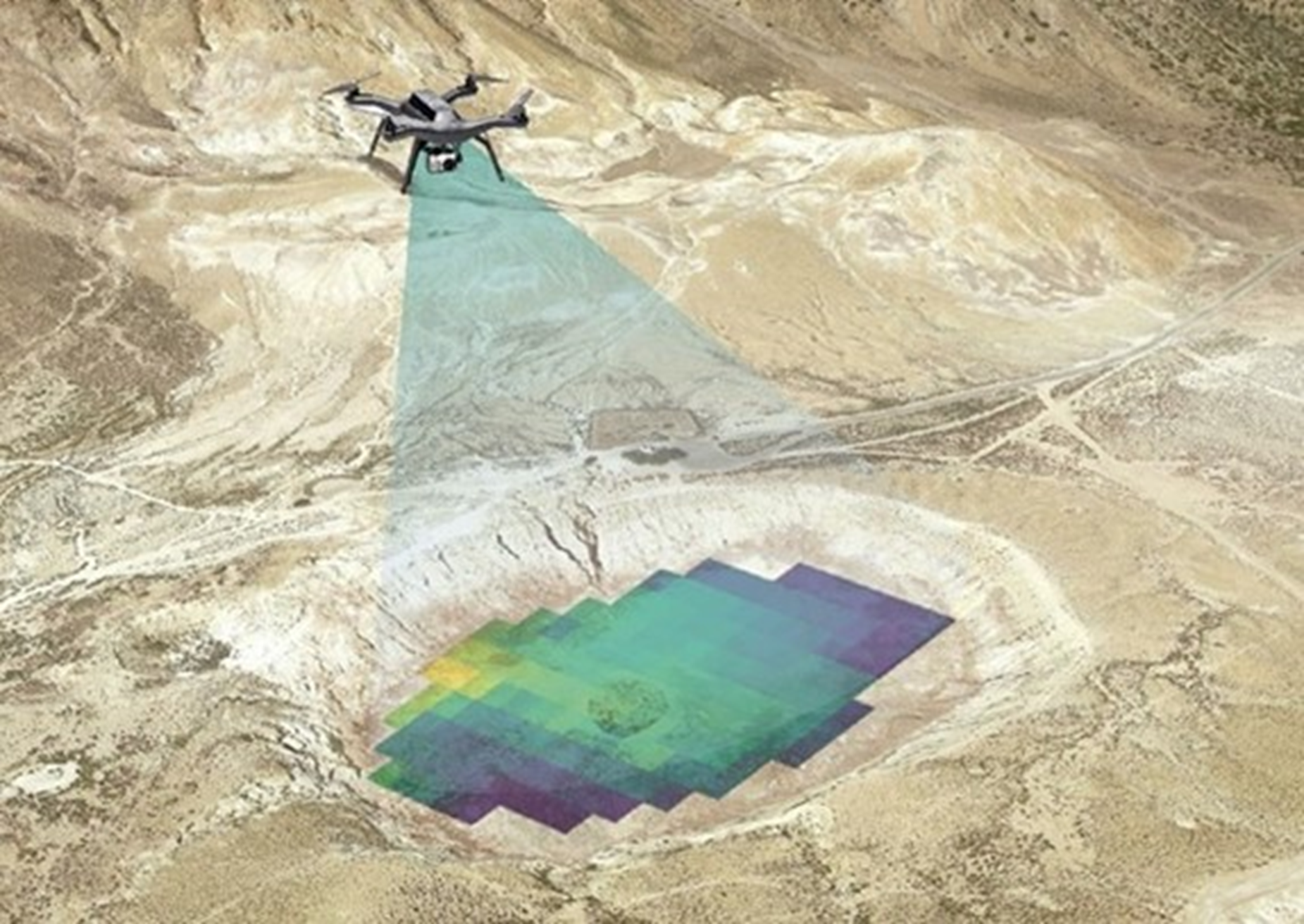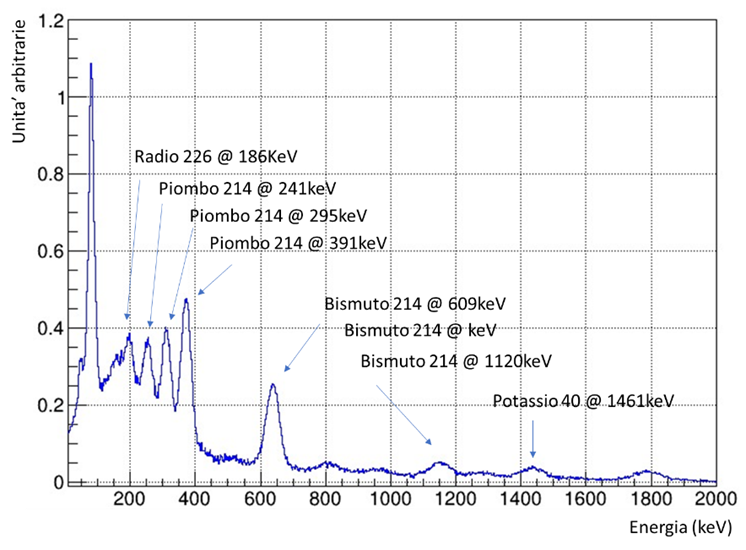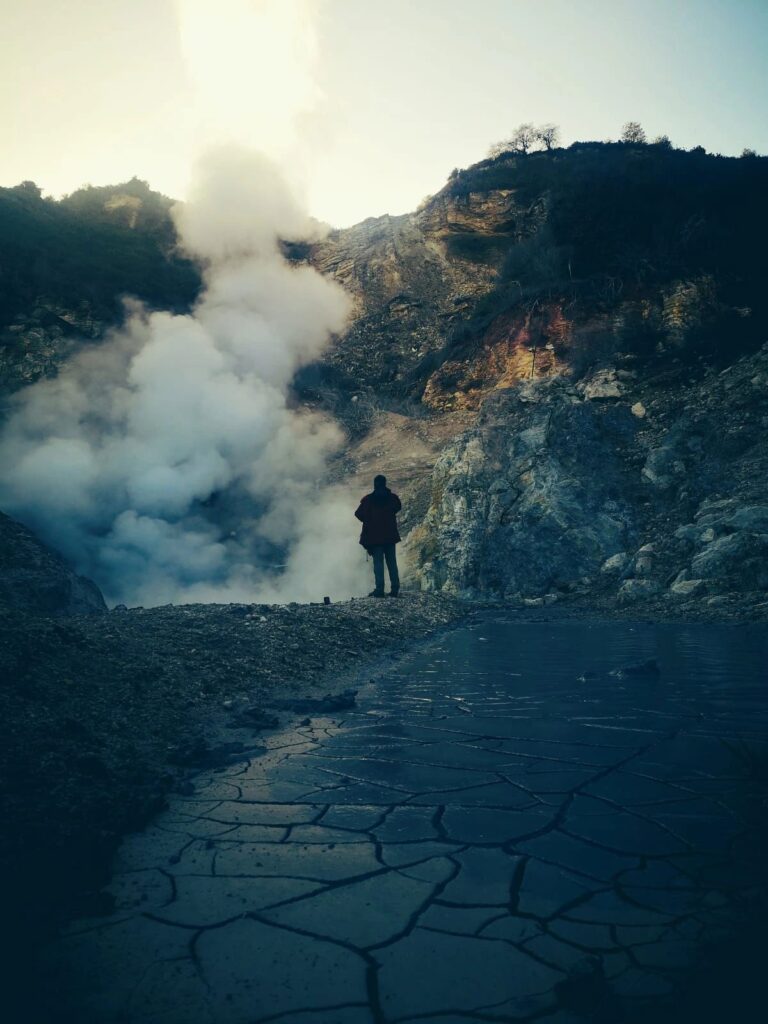

NISYROS
The testing of the measurement and analysis methodology was carried out through a measurement campaign at the volcanic island of Nisyros in Greece. The strategic choice of the site was due to the fact that the volcanic mineral concentration of naturally radioactive material proved to be an excellent test bench for studying sensor performance. The measurement campaign also verified that the developed system was completely autonomous in terms of power supply: the instrument indeed showed a autonomy of about two hours (not in flight). We thus obtained new and valuable information regarding the Radon/Toron ratio. This information is crucial for understanding the geology of an area and can have significant implications in terms of assessing radiological risk. The acquired data show the possibility of correctly identifying the presence of radioactive Lead and Bismuth, products of the Radon decay chain, allowing for the identification of radionuclides present in the analyzed area.


PISCIARELLI - CAMPI FLEGREI
The area of Pisciarelli, situated above the Agnano basin and behind the volcanic structure of Solfatara, is characterized by a large boiling "mudflat" and numerous fumaroles, the main one of which stands out for its intensity and size, especially on humid days. During these particular atmospheric conditions, the fumarole manifests as a tall and dense column of steam, visible even from a distance. Occasionally, water jets upwards (geysers) have been reported up to five meters high, with temperatures ranging between 75 and 95 degrees Celsius. However, scientists have attributed these phenomena to infiltrations of rainwater, considering them dangerous only in the vicinity of the water and steam emissions. The Pisciarelli area, like the entire Campi Flegrei caldera, has been monitored and studied for some time. Recent research has shown that the hydrothermal fluids of the caldera have concentrated at a depth of less than one kilometer, causing an expansion of the emission area and confirming Pisciarelli as the most active zone of the caldera. The Flying DEMon has recently initiated a study on the radioactive traces resulting from underground material in order to identify the main radionuclides and compare them with previous measurements taken at similar sites, such as the Nisyros volcano.
